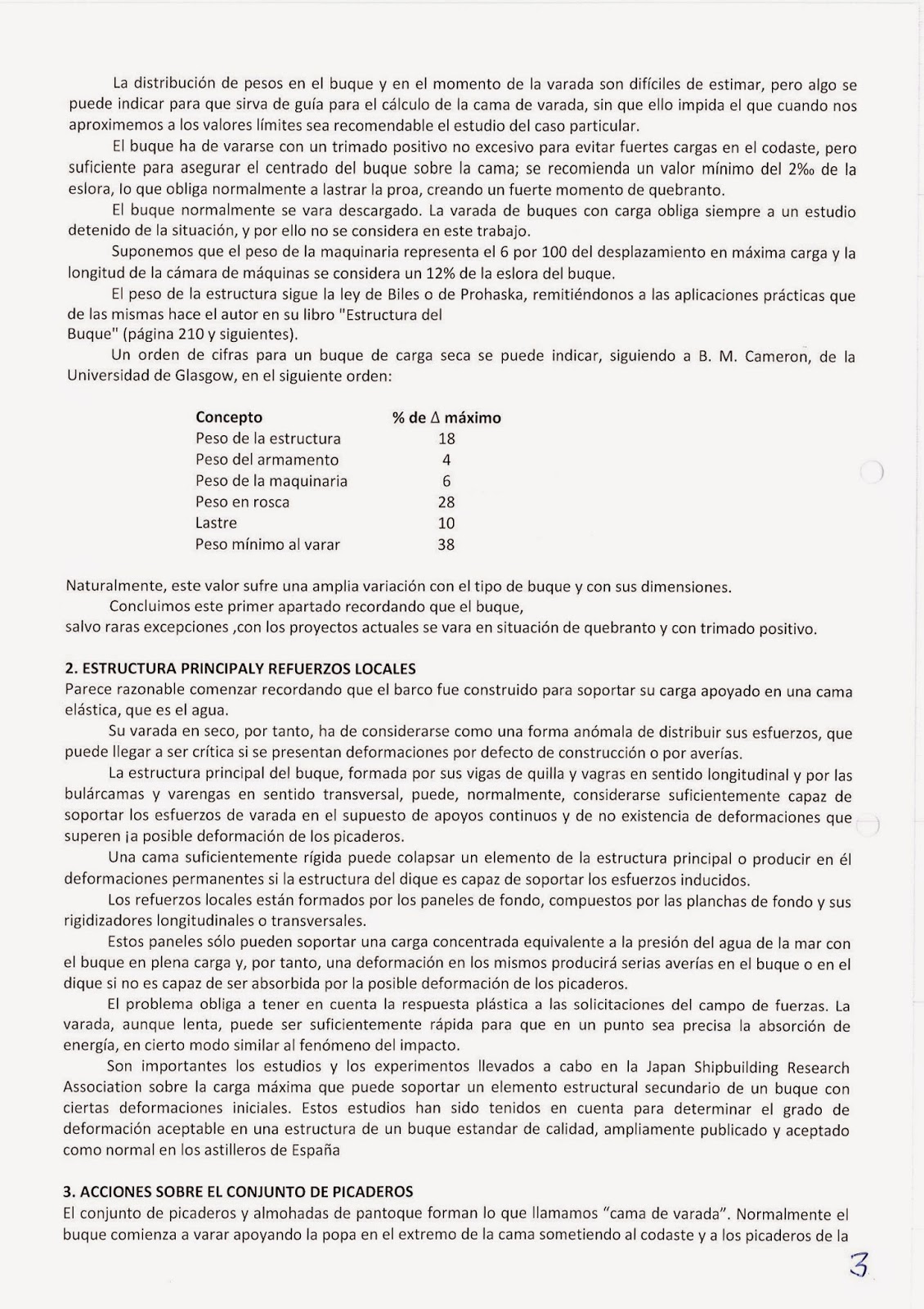Artículo publicado en la Revista Ingeniería Naval.
([1])
Septiembre 1979
RESUMEN
El carenado de buques muy pesados o con fuertes
cargas concentradas requiere la varada en diques de características resistentes
muy especiales.
La crítica situación
por la que atraviesa el mercado de buques obliga a ciertos astilleros a
modificar su estructura para dedicarse a tareas de reparaciones de buques en
diques actualmente dedicados a la construcción de éstos. Asimismo la varada de
buques de pesca con grandes trimados concentra en la popa pesos muy superiores
a los permitidos.
El autor presenta un
sistema de picaderos que permiten controlar los esfuerzos sobre lá solera del
dique y desmontar y montar los picaderos rápidamente y sin grandes pérdidas de
material.
SUMMARY
The drydocking of very heavy ships or with
hard concentrated loads, requires the put on the bed at drydocks with very
special and resistent characteristics.
The critical situation of the
ships market at present will oblige certain shipyards to modify their structure
in order to undertake ship-repairing at drydocks at present dedicated to the
ship-building. Likewise, the put on the bed of fishing-ships with large
trimming concentrates at bow weights over the ones permitted.
The author presents a skid system
which permits controlling .the efforts on the drydock floor, as well as the
assembly and disassembly of the skids fastly and without great losts of
materials.
INDICE
1. EL BARCO VIGA FLEXIBLE,
2. ESTRUCTURA PRINCIPAL Y REFUERZOS LOCALES.
3, ACCIONES SOBRE EL CONJUNTO DE PICADEROS
4. DIFERENTES TIPOS DE CAMA DE VARADA.
4.1 . Elasticidad de los picaderos.
4.2. Comportamiento ante las sobrecargas.
4.3. Facilidad de desmontaje y nivelación.
4.4. Facilidad de mantenimiento.
5. EL PICADERO ELASTICO.
5.1. El perfil de goma.
5.2. El conjunto de cuñones.
5.3. Desmontaje de picaderos.
5.4. Ventajas del picadero elástico como repartidor
de cargas.









No hay comentarios:
Publicar un comentario